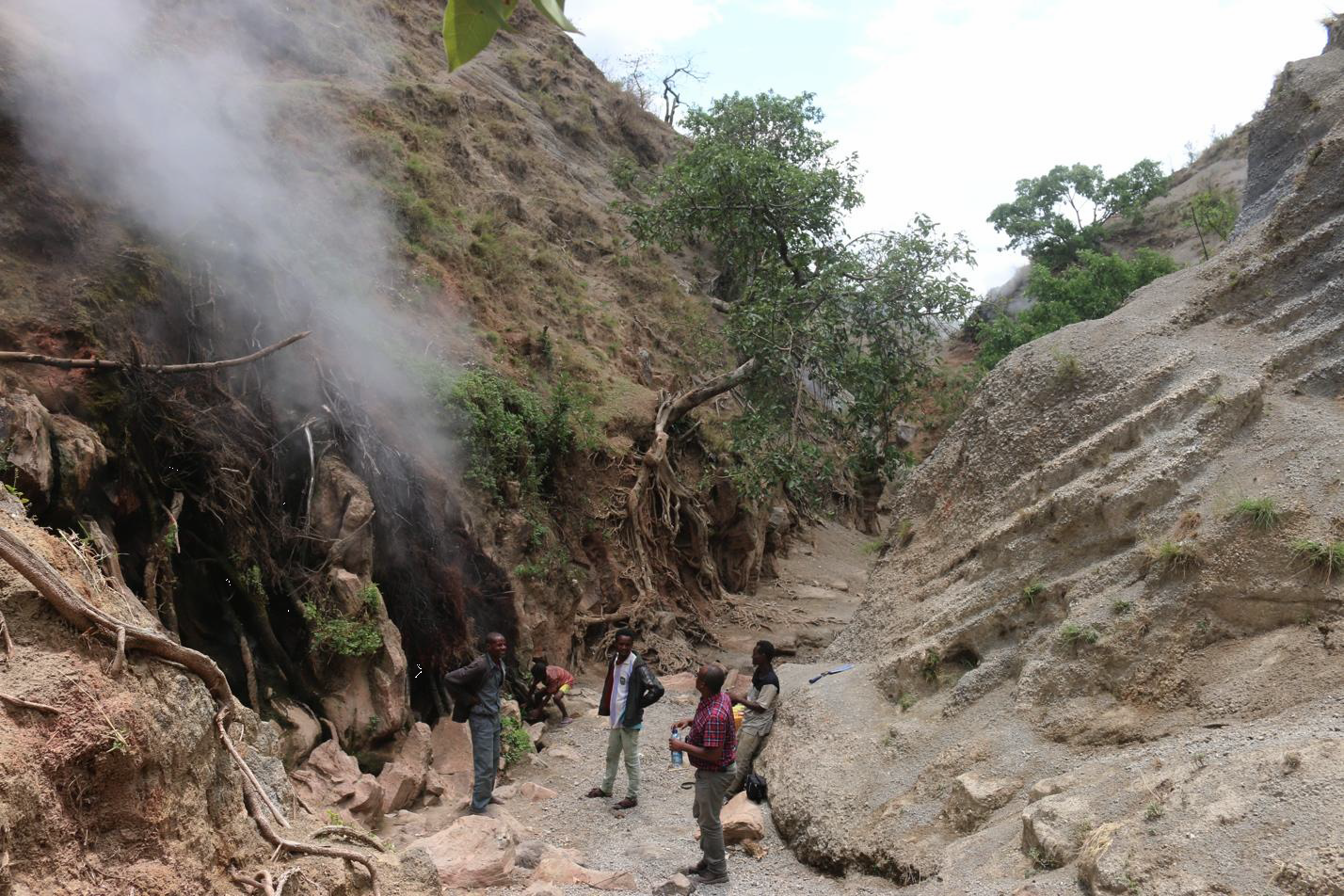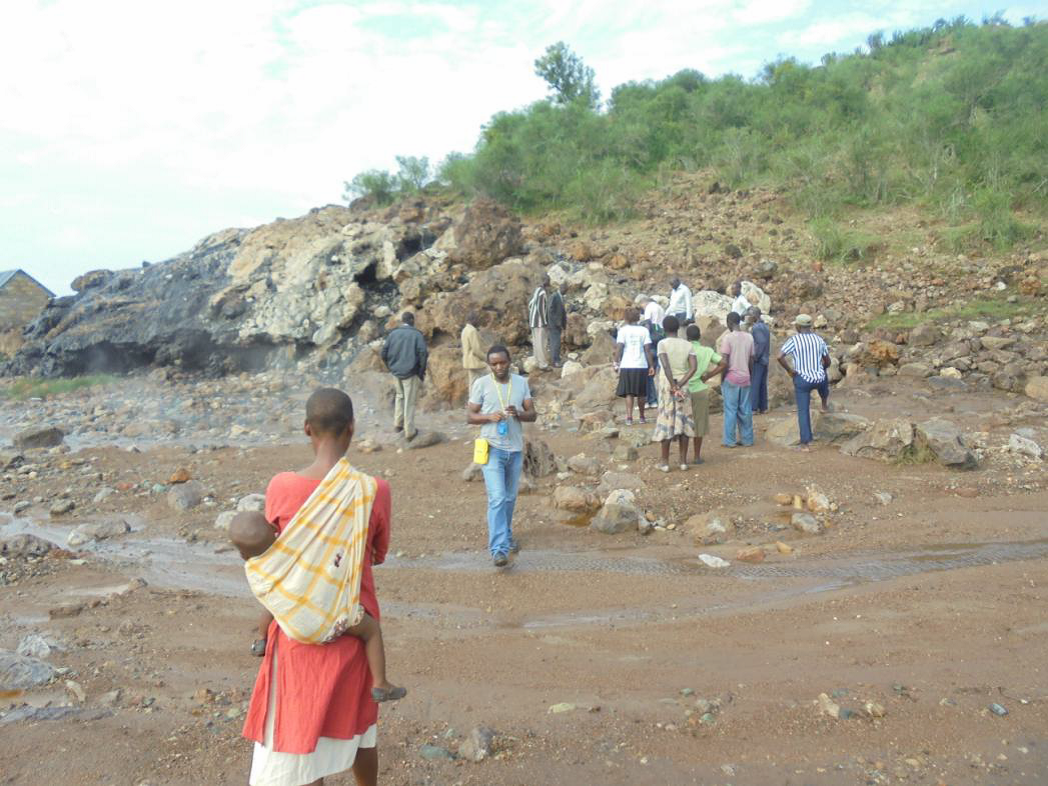|
Satellite and ground-based studies of the Kenya sector of the East African rift system (EAR) reveal active magmatic and/or aqueous fluid movement beneath 40% of the volcanoes, and similar results are emerging from systematic mapping along the Ethiopian and Tanzanian rift sectors with numerous surveys on geothermal energy. The project has two aims: the first is to map the small but multiple geothermal areas and the second is to identify new forms of geothermal exploitation along the EAR. These sites are small-size units combining power and heat applications from medium to low enthalpy resources (70-150°C) and their application for powering groundwater pumping. In parallel, the expected results from the project will inform nascent volcanic and earthquake hazard mitigation programs in Ethiopia, Kenya, and Tanzania. The project thus requires an interdisciplinary approach including geology, hydrogeology, fluid geochemistry, shallow crustal geophysics, power engineering (notably ORC units) applied in cascade use of energy (greenhousing, food drying, thermal bathing, green tourism). A survey of geothermal fields that could supply these innovative units will be carried out along the EAR (Afar through Kenya to Rungwe Province, Tanzania, using existing data from numerous reports from past geothermal exploration programs not presently available in the international journals as well as newly emerging data from two active NSF projects--CRAFTI and SEGMENTS). Thus, the team will build a strong regional framework for scientific and technological exchange, while at the same time empowering and educating local communities, particularly in pastoralist regions where resources are sparse. In parallel, their training and research exchange program will engage researchers in Africa, the United States, and Europe, with the aim of determining the necessary conditions and local training for such applications to be deployed in test sites in Ethiopia, Kenya, and Tanzania.
The expected major impact of the project, having mapped the potential of geothermal systems in East Africa for supplying small-sized units, will be to establish systems for replication of the initiatives at community level so as to provide power to the local community in areas not connected to the electric grid presently or in the foreseeable future. The power generated from these small units will also be used to increase drinking water supply for human and livestock. With the identification of both groundwater and hydrothermal resources on each site and socioeconomic conditions to be met for success, the project will determine the conditions for development of new irrigated land; production of local combined energy production devices; and hydrothermal fluid production for bathing, medical, and other sanitary applications, including sustainable tourist developments. These activities are expected to eventually contribute to improved socioeconomic conditions for communities living around the sites where the geothermal activities will take place.  |  | Geothermal steam from Corbetti Volcano, Ethiopia, being condensed with tree branches by local community for drinking and medical purposes.(photo courtesy of Dr. Mariita). | GeoPower Africa Kenyan team being given a tour guide to one of the hot springs at Homa Hills, western Kenya. A young girl, with her sibling strapped to her back, wonders how this geothermal project will affect her life. (Photo courtesy of Dr. Mariita) |
Final Summary of Project ActivitiesThe two main aims of this project were to map the multiple geothermal areas in Kenya, Ethiopia, and Tanzania and to identify new forms of geothermal exploitation along the East African Rift Valley. Over the course of the project, the GeoPower Africa team investigated and mapped the geothermal sites as planned and identified new forms of applicable economic activities that could be introduced to utilize the geothermal resources along the Rift Valley. The project employed an interdisciplinary approach, including using data from geology, volcanology, hydrogeology, fluid geochemistry, and geophysics to carry out the research. A sizable number of sites were visited by the team in the three countries, employing a systematic socioeconomic approach through community interviews, as well as observing the environment and economic activities of the communities around the geothermal sites. Results from the GeoPower Africa efforts indicate that numerous geothermal sites visited can support small units combining power generation and heat applications. Direct heat applications include greenhousing, food drying, food preservation, thermal bathing, and green tourism. These activities are expected to eventually contribute to improving socioeconomic life for the communities around the sites. The GeoPower Africa project also demonstrated that similar initiatives can be successfully replicated on a large scale along the East African Rift Valley system and that there are numerous suitable sites that have the required conditions for immediate development. The socioeconomic conditions of the areas visited and feedback on needs of the local communities surrounding these sites indicate a lack of adequate modern energy and clean water supplies, a situation that can, at least partially, be remedied by geothermal exploitation. The outreach programs carried out by the team also enabled the formation of linkages between the local communities around the geothermal sites, the GeoPower Africa team, and local institutions. The government and non-governmental agencies contacted were very supportive of the project and regarded the efforts as being supplementary to government energy programs. The concerned communities are now aware of the potential use of their geothermal resources and how they can collaborate with investors. Publications
Ameha A. Muluneh, Marco Cuffaro, Tesfaye Kidane, Along-strike variation in deformation style inferred from kinematic reconstruction and strain rate analysis: A case study of the Ethiopian Rift, Physics of the Earth and Planetary Interiors, Volume 270, 2017, Pages 176-182, ISSN 0031-9201. https://doi.org/10.1016/j.pepi.2017.07.009. Macharia, M. W., Gachari, M. K., Kuria, D. N., & Mariita, N. O. (2017). Low cost geothermal energy indicators and exploration methods in Kenya. Journal of Geography and Regional Planning, 10(9), 254-265. https://doi.org/10.5897/JGRP2017.0643
Back to PEER Science Cycle 3 Grants
|
|
|
|





